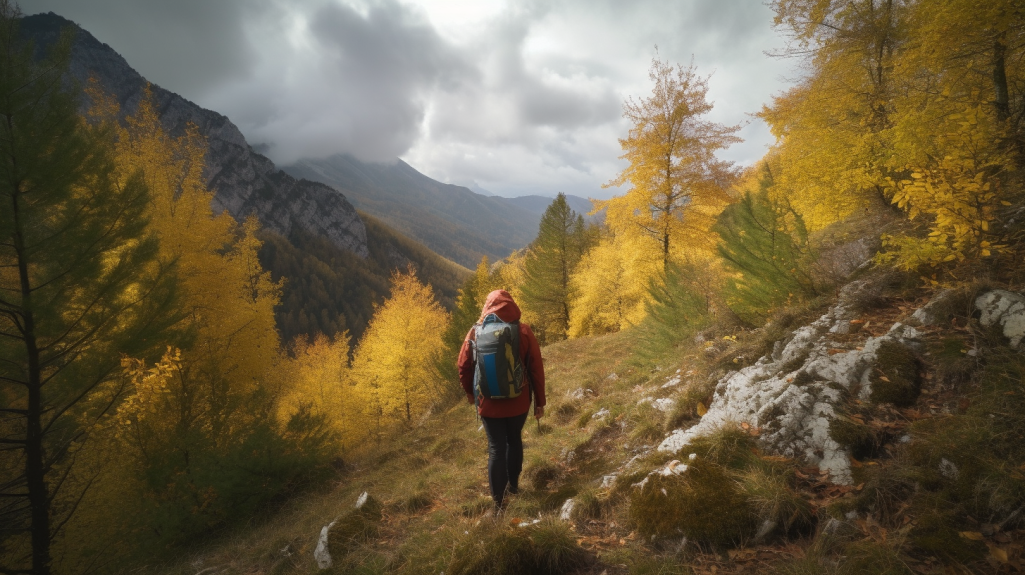There is an art to solo hiking that goes beyond lacing up your boots and hitting the trail. It’s a unique and profound experience that offers solitude, self-discovery, and a deep connection with nature. For those who crave adventure and the opportunity to explore the wilderness on their own terms, solo hiking is the ultimate way to escape the hustle and bustle of everyday life. In this article, we will delve into the world of solo hiking, exploring the profound experiences it offers, the unique challenges it presents, and providing essential safety tips along with personal anecdotes to inspire your next solo adventure.
The Profound Experience of Solo Hiking
Solo hiking is more than just a physical activity; it’s a journey into oneself. The solitude of the wilderness allows hikers to disconnect from the noise of the modern world and find inner peace. The rhythmic sound of boots on the trail, the whispering of leaves, and the melody of birdsong become the soundtrack of your adventure. In this tranquil environment, the mind finds clarity, creativity blooms, and the soul feels rejuvenated.
One of the most profound aspects of solo hiking is the opportunity for self-reflection. Away from the distractions of everyday life, hikers can confront their thoughts and emotions, leading to a deeper understanding of oneself. The solitude allows for introspection, enabling hikers to gain insights into their fears, desires, and goals. It’s a chance to confront challenges and find strength within, fostering personal growth and resilience.
Navigating the Wilderness Alone
While solo hiking offers immense rewards, it also comes with unique challenges. One of the primary concerns is safety. Being alone in the wilderness means there is no one to rely on but yourself. It’s crucial to be well-prepared, both mentally and physically, and to possess essential survival skills.
Navigating trails, reading maps, and understanding the terrain are vital skills for solo hikers. Additionally, knowledge of first aid and basic survival techniques can be a lifesaver in case of emergencies. Carrying a reliable communication device, such as a satellite phone or personal locator beacon, ensures that help can be summoned if needed, even in areas with no cell reception.
Another challenge faced by solo hikers is the emotional aspect of solitude. Spending days without human interaction can be both liberating and isolating. However, this solitude also provides an opportunity for profound connection with nature. Observing the intricate patterns of wildlife, the dance of sunlight through the trees, and the ever-changing colors of the sky fosters a deep appreciation for the natural world.
Essential Safety Tips for Solo Hikers
- Plan Thoroughly: Research your chosen trail thoroughly. Know the terrain, weather conditions, and potential hazards. Inform someone you trust about your itinerary and expected return time.
- Pack Wisely: Carry essential gear, including a map, compass, first aid kit, water purification tools, and enough food and water to last your entire trip. Dress in layers to accommodate changing weather conditions.
- Stay Aware: Always be aware of your surroundings. Stay on marked trails, avoid risky shortcuts, and be cautious near cliffs or steep terrain.
- Trust Your Instincts: If something doesn’t feel right, trust your instincts and err on the side of caution. It’s better to turn back or find an alternative route than to put yourself in a dangerous situation.
- Practice Leave No Trace: Respect nature and wildlife. Leave no trace of your presence, pack out all trash, and avoid disturbing wildlife.
- Stay Connected: Carry a communication device and check in with someone regularly, especially if you’re hiking in remote areas with no cell reception.
Personal Anecdotes
Every solo hiking journey is a unique story waiting to be told. From the thrill of summiting a challenging peak alone to the quiet moments of contemplation by a serene lake, solo hikers often encounter unforgettable experiences.
One solo hiker, Sarah, recalls her transformative journey through the Appalachian Trail. As she navigated the rugged terrain and faced unexpected weather challenges, she discovered an inner strength she never knew she possessed. “Solo hiking taught me the importance of self-reliance and resilience,” Sarah says. “It was during those solitary moments in the wilderness that I found the courage to face my fears and overcome obstacles.”
Another hiker, Alex, shares a different perspective: “Solo hiking allowed me to truly connect with nature on a spiritual level. The solitude provided the space for me to meditate, reflect, and find peace within myself. It was a transformative experience that rekindled my love for the natural world.”
The Art of Solo Hiking
Solo hiking is more than an outdoor activity; it’s an art form that requires skill, preparation, and a deep appreciation for solitude. It offers profound experiences that foster self-discovery, resilience, and a strong connection with nature. While it presents unique challenges, the rewards of solo hiking are immeasurable.
As you embark on your solo hiking adventure, remember to plan meticulously, stay aware of your surroundings, and trust your instincts. Embrace the solitude, listen to the whispers of the wind, and let the wilderness guide you on a transformative journey of self-discovery. In the art of solo hiking, you will find not only solitude but also the profound beauty of the natural world and the strength within yourself. So, lace up your boots, hit the trail, and discover the art of solo hiking for yourself. The wilderness is calling, and it’s time to answer its timeless invitation.

